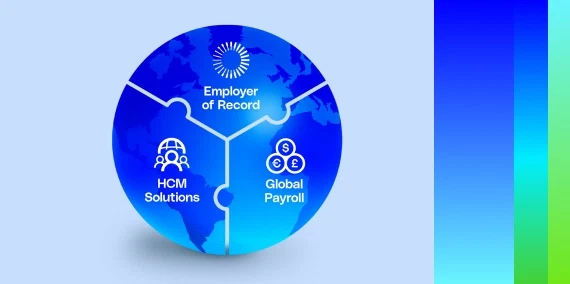HR is about humans. But balancing the needs of humans with the need to drive business forward isn’t always easy. HR leaders have to attract top talent, build high-performing teams, and reach business goals — all while creating a positive work experience for employees. Now, HR teams are finding the help they need in AI.
In our 2025 AI at Work report, we take a look at the rapidly evolving AI landscape, offering insights for business and HR leaders looking to stay ahead of the curve. In partnership with Wakefield Research, we surveyed 2,850 global executives and 500 U.S.-based HR professionals to get their take on AI and how it’s shaping global workforce strategies.
Here are some of the report’s key findings.
The state of AI adoption
HR teams were perceived as slow to adopt new tech. But now, HR is leading the charge in innovation. In our report, 74% of U.S.-based HR leaders believe they’re adopting AI more quickly than other departments are.
AI is gaining traction outside of HR too. Companies across industries are using AI to drive innovation and operational efficiency. According to our report, 74% of executives view AI as critical to their company’s success.
95% of executives believe AI tools (ChatGPT, Google Gemini, etc.) are more effective than search engines such as Google for research.
2025 AI at Work report
Our survey also confirmed that despite leaders’ enthusiasm, a lack of trust in AI’s output remains a barrier to adoption. Leaders rely on AI for research but are cautious about using AI for decision-making.
AI monitoring and governance
As AI adoption increases, so does the need for human oversight. Companies are creating governance frameworks to manage AI usage and ensure compliance:
- 92% of executives report that AI tools require organizational approval before implementation.
- 94% would accept AI monitoring of their business activities if it guaranteed increased productivity.
- Almost half of executives (46%) would consider switching to a different company that encouraged the use of AI tools if their current job didn’t.
AI’s productivity potential and the human component
AI drives productivity and efficiency. But companies must also consider its impact on people and workforce management.
Our report revealed that 67% of executives would reduce headcount for a 50%-productivity increase with AI. HR must ensure that the human workforce evolves alongside AI, through training and professional development.
By advocating for continuous learning opportunities with AI, leaders can empower employees to stay ahead of innovation and thrive in an AI-driven future.
Laura Maffucci
Head of HR, G-P
HR is about people work, not paperwork.
HR leaders are leveraging AI-powered tools to automate admin tasks. Innovative AI solutions like G-P Gia™ can help HR leaders:
- Simplify compliance and dedicate more time to workforce initiatives.
- Get real-time, multi-jurisdiction compliance checks on employment contracts.
- Stay up-to-date with regional regulations for benefits and entitlements, ensuring a smooth employee experience.
- Create personalized professional development plans that meet regulatory requirements.
By leveraging cutting-edge AI technology, HR leaders can act as strategic business contributors and focus on driving innovation, building high-performing teams and fostering an exceptional employee experience.
Embrace the future of HR with AI.
The findings of our 2025 AI at Work report made one thing loud and clear: AI is no longer optional.
To learn more about how AI is impacting the workplace and how it can transform your global HR approach, check out the full AI at Work report










